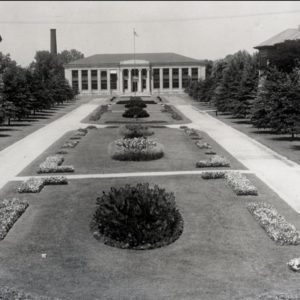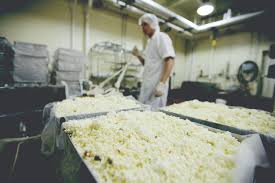Lincoln Nebraska, around 35th & Holdrege, Lincoln, Nebraska.
The Fall semester is underway. Can you believe it? It’s only mid-August. Cry as I may over the passing summer, time marches on and the students fill the halls of my building here on East Campus at UNL. Classes start Monday.
Truth be told, I would rather be on city campus. I like its hustle and bustle and proximity to downtown. But East Campus is where I work, and it has its charm. Its original layout, buildings sitting on the East

Campus Loop, still exists today with buildings dating back to the first half of the 1900s. East campus is home to the Dairy Store – a must-visit spot for

out of towners, it features ice cream and cheeses made from products generated by the UNL Ag Program. The East Campus Student Union houses a tiny but full-service bowling alley that is the practice field for our five-time National Championship bowling team. On East campus you are as likely to see a freshman Agricultural Systems Technology major wearing a hubcap sized belt buckle and high school letter jacket for rodeo as you are to see a brightly dressed Textiles and Merchandising major wearing fashion forward clothing standing out like a prairie flower.
Yes. East campus is home to cow pokes and future fashionistas alike (and all industries in between that aim to clothe and feed the world). It is also home to UNL dental college and its annual Museum of Dental Oddities, The Larsen Tractor Museum, and a prairie themed botanical garden and arboretum. In addition, and I’m not saying you do, but if you want to view a three fourths size bronze statue of former Nebraska Governor and U.S. Agricultural Secretary Mike Johann’s, East Campus is the only place I know of to do that.

Sitting on the west side of the Loop, UNL’s original home Ec. building houses not just Nutrition and Textile Arts and Sciences, but administration and meeting rooms for the entire College of Education and Human Sciences. This is where I found myself this morning for a welcome meeting to the 2018-19 school year.
On my way there, I met up with this little fox who was no more afraid of the light pedestrian and bike traffic than are the campus squirrels. Fox sightings are becoming more common in town, but that hasn’t made seeing one any less thrilling. This one might as well have been tossing fairy dust as it trotted across the East Campus Loop. People were spellbound.

After the meeting, I took the opportunity to visit upstairs in the Home Ec building. On the second-floor hallway there is usually an interesting display. This month, the clothing of Mari Sandoz is the theme. Mari Sandoz was the child of immigrants and the oldest of 6 children. Like all children of settlers, she worked on her family’s farm in Western Nebraska throughout her young life. She did not learn to speak English until the age of 10. She was 17 when she finished the 8thgrade but did not go to high school. Yet, amazingly, she later went on to attend the University of Nebraska and became one of Nebraska’s most important authors. She, of course, famously wrote Old Jules, about her difficult and harsh father. She also wrote one of my favorite books, Miss Morrisa, Doctor of the Gold Trail. It’s historical fiction about a female doctor, Miss Morrisa, practicing in the rough and tumble western frontier. Because she was a woman, she was deemed fit only to treat Indians and white dying people if they were too far away to reach male physician who lived in the city. It’s a great western, plus good history of western Nebraska and its pioneer/Indian history. I highly recommend this book.
As an adult, Sandoz often wore pants when she went back to the prairie, however she had a sense of her public image as she gained notoriety writing and dressed for the part. Dresses from her professional wardrobe have been curated and are on display right now. She favored tailored stylish dresses always with a bit of brown, as a reminder of her connection to the land on which she was raised.
another little-known East Campus gem is the Robert Hillestad Textile Gallery. It is an intimate gallery space tucked away in the corner of the second floor of the Home Ec building. There is always something interesting and unexpected going on in there. This month on exhibit are painted cloths from India. They are intricately detailed and vividly colored,
and sometimes sparkling. The themes celebrate the sacred cow or the lives of the deities.

I’ve included a photo of detail from one of my favorites. It features a god head wearing a peacock crown on a cow body. The tail is that of a horse, but it is colored like a peacock plume. The feet are tiny peacock bodies. It’s wonderful.
I’ve included a photo of detail from one of my favorites. It features a god head wearing a peacock crown on a cow body. The tail is that of a horse, but it is colored like a peacock plume. The feet are tiny peacock bodies. It’s wonderful.

So, scramblers, while I’m woefully unready for the semester to start, and I continue to have City campus envy (#FOMOUNLCITYCAMPUS), East Campus, where I am planted, blooms. Today I stopped to smell the flowers.
Peace.
J
